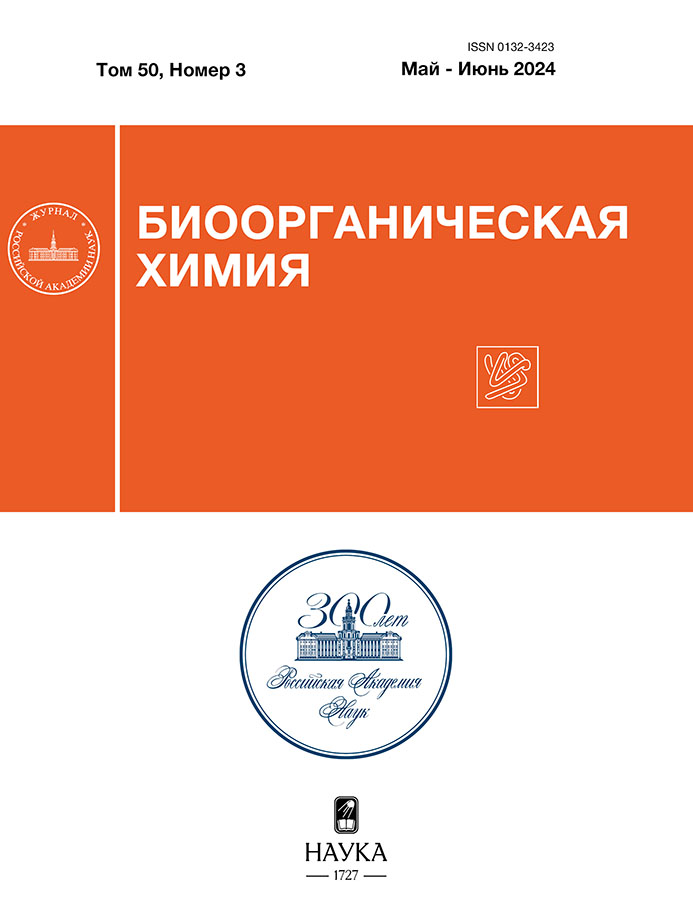Isoforms of the cytoskeletal lim-domain protein zyxin in the early embryogenesis of Xenopus laevis
- Authors: Ivanova E.D.1, Parshina E.A.2, Zaraisky A.G.2, Martynova N.Y.2
-
Affiliations:
- Pirogov Russian National Research Medical University
- Shemyakin–Ovchinnikov Institute of Bioorganic Chemistry RAS
- Issue: Vol 50, No 3 (2024)
- Pages: 287-294
- Section: Articles
- URL: https://cardiosomatics.ru/0132-3423/article/view/670887
- DOI: https://doi.org/10.31857/S0132342324030077
- EDN: https://elibrary.ru/NZUWKW
- ID: 670887
Cite item
Abstract
Zyxin is a conserved mechanosensitive LIM-domain protein that regulates the assembly of F-actin filaments at cell junctions. At the same time, under mechanical stress, it can move from focal adhesions to stress fibrils and into the nucleus and affect gene expression. In Xenopus laevis embryonic cells, western blots with antibodies against Zyxin’s N-terminal and C-terminal LIM-domain regions revealed two full-length and two short isoforms. The intracellular localization of these isoforms and the number depending on the stage of embryo development were determined. According to our study, full forms with different electrophoretic mobility are localized differently in the cell, and the shortest isoform containing LIM-domains is stable during development, mainly located in the nucleus, and participates in gene expression regulation. This study may be of great value to understanding how the LIM-domain mechanotransducer proteins jointly influence morphogenesis and differentiation in vertebrates at early stages of development.
Full Text
About the authors
E. D. Ivanova
Pirogov Russian National Research Medical University
Email: martnat61@gmail.com
Russian Federation, ul. Ostrovitianova 1, Moscow, 117997
E. A. Parshina
Shemyakin–Ovchinnikov Institute of Bioorganic Chemistry RAS
Email: martnat61@gmail.com
Russian Federation, ul. Miklukho-Maklaya 16/10, Moscow, 117997
A. G. Zaraisky
Shemyakin–Ovchinnikov Institute of Bioorganic Chemistry RAS
Email: martnat61@gmail.com
Russian Federation, ul. Miklukho-Maklaya 16/10, Moscow, 117997
N. Y. Martynova
Shemyakin–Ovchinnikov Institute of Bioorganic Chemistry RAS
Author for correspondence.
Email: martnat61@gmail.com
Russian Federation, ul. Miklukho-Maklaya 16/10, Moscow, 117997
References
- Martynova N.Y., Eroshkin F.M., Ermolina L.V., Ermakova G.V., Korotaeva A.L., Smurova K.M., Gyoeva F.K., Zaraisky A.G. // Dev. Dyn. 2008. V. 237. P. 736–749. https://doi.org/10.1002/dvdy.21471
- Li B., Zhuang L., Trueb B. // J. Biol. Chem. 2004. V. 279. P. 20401–20410. https://doi.org/10.1074/jbc.M310304200
- Reinhard M., Zumbrunn J., Jaquemar D., Kuhn M., Walter U., Trueb B. // J. Biol. Chem. 1999. V. 274. P. 13410–13418. https://doi.org/10.1074/jbc.274.19.13410
- Steele A.N., Sumida G.M., Yamada S. // Biochem. Biophys. Res. Commun. 2012. V. 422. P. 653–657. https://doi.org/10.1016/j.bbrc.2012.05.046
- Beckerle M.C. // Bioessays. 1997. V. 19. V. 949–957. https://doi.org/10.1002/bies.950191104
- Fradelizi J., Noireaux V., Plastino J., Menichi B., Louvard D., Sykes C., Golsteyn R.M., Friederich E. // Nat. Cell Biol. 2001. V. 3. P. 699–707. https://doi.org/10.1038/35087009
- Oldenburg J., van der Krogt G., Twiss F., Bongaarts A., Habani Y., Slotman J.A., Houtsmuller A., Huveneers S., de Rooij J. // Sci. Rep. 2015. V. 5. P. 17225. https://doi.org/10.1038/srep17225
- Dong X., Biswas A., Süel K.E., Jackson L.K., Martinez R., Gu H., Chook Y.M. // Nature. 2009. V. 458. P. 1136–1141. https://doi.org/10.1038/nature07975
- Kadrmas J.L., Beckerle M.C. // Nat. Rev. Mol. Cell. Biol. 2004. V. 5. P. 920–931. https://doi.org/10.1038/nrm1499
- Sun X.M., Bowman A., Priestman M., Bertaux F., Martinez-Segura A., Tang W., Whilding C., Dormann D., Shahrezaei V., Marguerat S. // Curr. Biol. 2020. V. 30. P. 1217–1230. https://doi.org/10.1016/j.cub.2020.01.053
- Moody J.D., Grange J., Ascione M.P., Boothe D., Bushnell E., Hansen M.D. // Biochem. Biophys. Res. Commun. 2009. V. 378. P. 625–628. https://doi.org/10.1016/j.bbrc.2008.11.100
- Call G.S., Chung J.Y., Davis J.A., Price B.D., Primavera T.S., Thomson N.C., Wagner M.V., Hansen M.D // Biochem. Biophys. Res. Commun. 2011. V. 404. P. 780– 784. https://doi.org/10.1016/j.bbrc.2010.12.058
- Fujita Y., Yamaguchi A., Hata K., Endo M., Yamaguchi N., Yamashita T. // BMC Cell Biol. 2009. V. 10. P. 6. https://doi.org/10.1186/1471-2121-10-6
- Zhao Y., Yue S., Zhou X., Guo J., Ma S., Chen Q. // J. Biol. Chem. 2022. V. 298. P. 101776. https://doi.org/10.1016/j.jbc.2022.101776
- Oku S., Takahashi N., Fukata Y., Fukata M. // J. Biol. Chem. 2013. V. 288. P. 19816–19829. https://doi.org/10.1074/jbc.M112.431676
- Wang Y.X., Wang D.Y., Guo Y.C., Guo J. // Eur. Rev. Med. Pharmacol. Sci. 2019. V. 23. P. 413–425. https://doi.org/10.26355/eurrev_201901_16790.
- Sabino F., Madzharova E., Auf dem Keller U. // Cell Death Dis. 2020. V. 11. P. 674. https://doi.org/10.1038/s41419-020-02883-2
- Chan C.B., Liu X., Tang X., Fu H., Ye K. // Cell Death Different. 2007. V. 14. P. 1688–1699. https://doi.org/10.1038/sj.cdd.4402179
- Lecroisey C., Brouilly N., Qadota H., Mariol M.C., Rochette N.C., Martin E., Benian G.M., Ségalat L., Mounier N., Gieseler K. // Mol. Biol. Cell. 2013. V. 24. P. 1232–1249. https://doi.org/10.1091/mbc.e12-09-0679
- Martynova N.Y., Parshina E.A., Ermolina L.V., Zaraisky A.G. // Biochem. Biophys. Res. Commun. 2018. V. 504. P. 251–256. https://doi.org/10.1016/j.bbrc.2018.08.164
- Martynova N.Y., Parshina E.A., Zaraisky A.G. // STAR Protoc. 2021. V. 2. P. 100449. https://doi.org/10.1016/j.xpro.2021.100449
- Lee C.R., Park Y.H., Min H., Kim Y.R., Seok Y.J. // J. Microbiol. 2019. V. 57. P. 93–100. https://doi.org/10.1007/s12275-019-9021-y
- Martynova N.Y., Parshina E.A., Zaraisky A.G. // FEBS J. 2023. V. 290. P. 66–72. https://doi.org/10.1111/febs.16308
- Martynova N.Y., Ermolina L.V., Eroshkin F.M., Gioeva F.K., Zaraisky A.G. // Russ. J. Bioorg. Chem. 2008. V. 34. P. 513–516.
- Martynova N.Y., Parshina E.A., Eroshkin F.M., Zaraisky A.G. // Russ. J. Bioorg. Chem. 2020. V. 46. P. 530–536. https://doi.org/10.31857/S013234232004020X
- Parshina E.A., Eroshkin F.M., Оrlov E.E., Gyoeva F.K., Shokhina A.G., Staroverov D.B., Belousov V.V., Zhigalova N.A., Prokhortchouk E.B., Zaraisky A.G., Martynova N.Y. // Cell Rep. 2020. V. 33. P. 108396. https://doi.org/10.1016/j.celrep.2020.108396
- Parshina E.A., Orlov E.E., Zaraisky A.G., Martynova N.Y. // Int. J. Mol. Sci. 2022. V. 23. P. 5627. https://doi.org/10.3390/ijms23105627
Supplementary files












